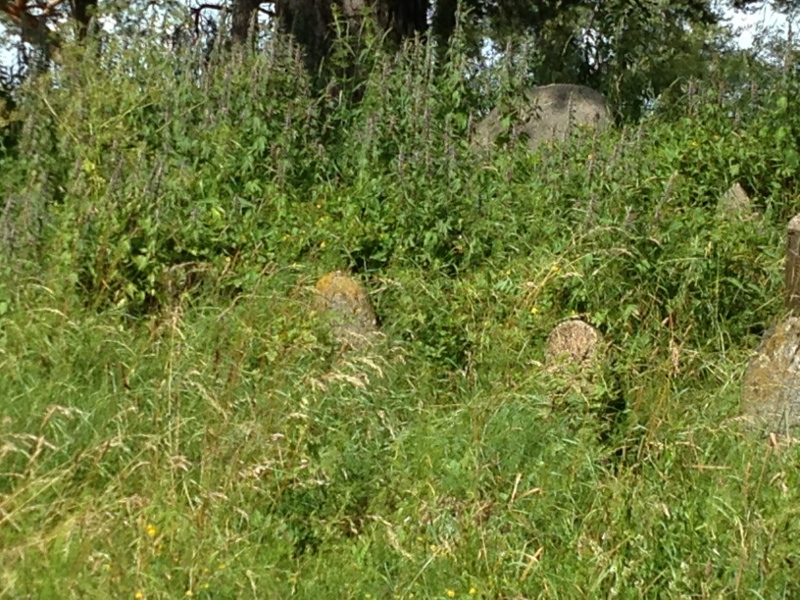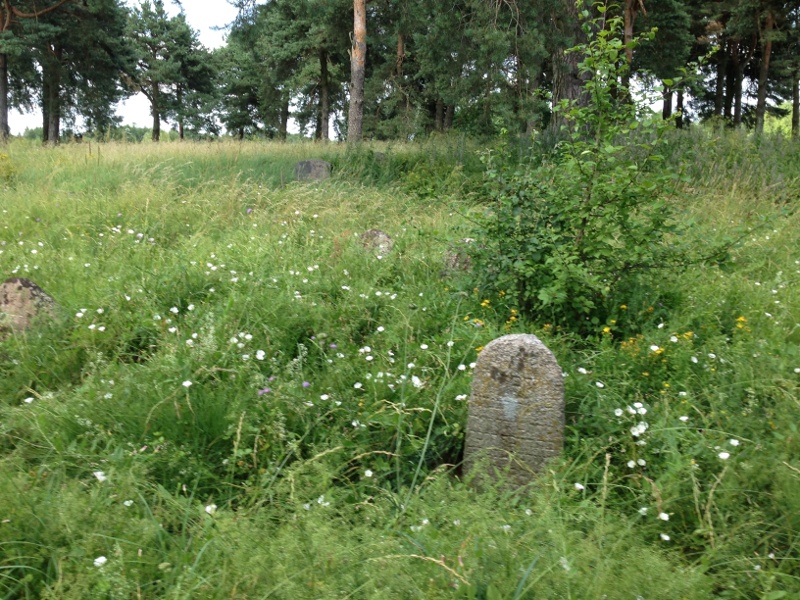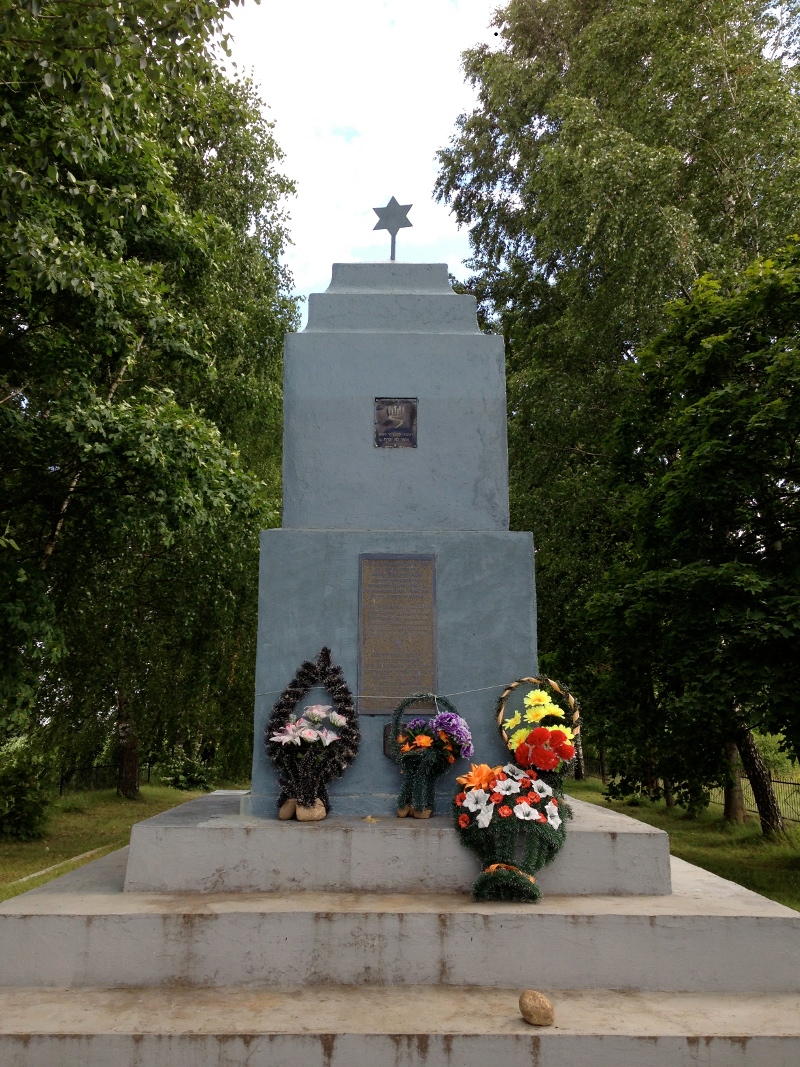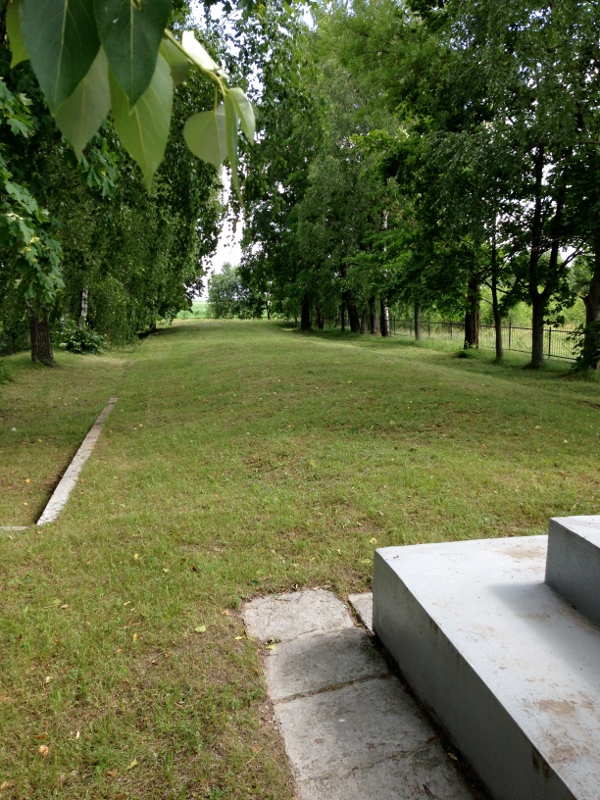Alternate names: Zheludok [Rus, Yid], Żołudek [Pol], Žałudok [Bel], Zholudok, Zhaludok, Zoludek, Russian: Желудок. Belarusian: Жалудок. Hebrew: ז'לודוק. 53°36' N, 24°59' E, 23 miles SSW of Lida, 35 miles W of Navahrudak (Nowogródek). Yizkor: Sefer Zoludek ve-Orlowa; galed le-zikaron (Tel Aviv, 1967). 1900 Jewish population: 1,372. : Formerly in Lida uezd, Vilna guberniya, Lithuania then Grodno guberniya, Russian Empire, then Nowogrudok uezd, Poland, now Grodno Oblast. Shtetlink. [October 2000]
- The Book of Zoludek and Orlova, Belarus
- Pinkas HaKehilot, Poland, Vol. 8 (2005), p. 344-346: "Zoludek"
- Shtetl Finder (1980), p. 126: "Zheludok".
- photo and map [Aug 2015]
Lida Uezd - Zaludok - JewishGen KehilaLink
History:The 280 Jews there in 1766 were lead by J. Kagan of Grodno. In 1848, Zaludok was a town on the shores of the Zoludchanka River, near the right bank of the Neman River in the area of Lida on the road from Grodno to Novogrodek, 10 viorsts from the post office in the town of Peshchulna and 42 viorsts SW of Lida and 130 viorsts from Vilna with 130 houses abd674 residents. A Jewish synagogue, a Jewish house of prayer, two water powered flour mills, a whiskey distillery, a beer brewery, twenty-three stores, a weekly market every Sunday, and an annual fair. The 1849 Jewish population was 247 and in 1898, 1,372 out of a total population of 1,860. Holocaust memorial photo. [February 2010]
Does anyone have information about the abandoned estate of the Czetwertynski family in the village of Zaludok? Contact the coordinator please.
Żołudek (Slownik Geograficzny translation). (Słownik, v. XIV, pp. 827-828):
Formerly Zeludok, town on the river Zoludczanka near the bank of the Niemen, Lida district, in the 3rd police precinct, gminaand rural district of Żaludok, at 53 degrees 36 minutes north latitude and 42 degrees 38 minutes Ferro east longitude [per Greenwich, approx. 24 degrees 58 minutes east longitude], near the greater road from Grodno to Nowogrodek, 10 wiorsts (approx. 10 km) from the Iszczolna post office, 13 w. from the village Pieskowce (Niemen), 42 w. southwest of Lida, and 130w. from Wilno.
It has 130 houses, 674 inhabitants, gmina administration, a Catholic parish church, a synagogue, a Jewish prayer house, 2 water mills, distilleries, a brewer of beer, 23 shops, a market every Sunday, a fair on the feast day of the Holy Ghost (Pentecost Sunday, 7 weeks after Easter). The rural district comprises the town of Żołudek and the villages of Bojary, Farny Koniec, Kupry, Skiersie, and Zatoki, and the zascianek Wołczki; among the people in the year 1865 were 515 dusz rewiv. ["revision souls" = male serfs].
The gmina belongs to the 2nd peace district of peasant affairs, encompassing from the 3rd district (Żołudek, Krasula, and Dabrowo) comprising 26 localities, having 328 houses, 3,762 peasant residents (1,427 male serfs) enfranchised/granted land of 7,755 dziesiatun [1 = 1.09 hectares = 2.9 acres] (4,737 fields?) [approx. 22,589 acres]. Also within the gmina boundaries are 4,090 dz. [11,861 acres] of greater quality. The whole gmina area has 11,878 dzies. [34,446 acres] (6,329 fields) and 4,698 inhabitants.
The Catholic parish church, called by the name Assumption of the Blessed Virgin Mary, is built of brick walls and stands on a high hill. Construction was begun in 1828. Tyzenhausowa completed it in the year 1835 when her daughter married Count Uruski. There is a chapel in the cemetery. The Catholic parish, Lida deanery, has 6,282 faithful. Formerly it had a chapel in Krasuli. The Niemen [river] divides the parish in two parts, the larger of which lies to the right of the river.
In this parish on the Niemen, there are enormous forests replete with big game like roe-deer, wild boar, and elk. Occasionally beavers (by the Niemen) and bear are encountered. According to data from the year 1817, the terrain of the parish is a little hilly, with vast forests near the Niemen, much pasture land, and soil of sand, gravel, and clay/loam. Rivers: Niemen, Szczara, Lebiodka, and Zoludczanka.
At one time there were here a royal estate and unenclosed county offices. The Lithuanian Metryka offer these starostas[sheriffs] of Żołudek: Marcin Chreptowicz (1501-08), Michal Pacewicz (1510), and Prince Wasil Polubinski (1516-33).
[Grand Duke of Lithuania] Kazimierz Jagiellonczyk founded this place, and between the years 1480 and 1490 endowed a parish church. In one of the Tartar invasions, very likely in the year 1506, this church burned down and the right to endowment disappeared. In the year 1529 on the Saturday before St. George's Day, Zygmunt I, wanting to restore the former church bequest in the royal town of Żołudek, revealed through a commissioned messenger, that he confirmed and generated new ones. [Acts of the Diocese of Wilno, book 2, page 157]
In the year 1535, at the clemency of the king, [two] deserters from Moscow, Prince Siemion Bielski and senior counselor Iwan Lacki, came to Lithuania. On the first of them, Zygmunt the Elder conferred Zyzmory, Stokliszki, and Kormialy; on the second, Wysoki Dwor and Żołudek.
In a later time, Żołudek went into the possession of the Sapiehas, very likely in compensation for numerous sacrifices of property given up for the Republic. From the Sapiehas, Żołudek was passed as dowry for Anna Sapiehowa to the home of Radziminski-Frackiewicz h. Brodzic, from whom more or less in the year 1680 Kazimierz, [Lithuanian] court treasurer, with the authorization of the Republic, acquired the collatorship of the local church. [Acts of the Diocese of Wilno, book 4, page 1652]
This Kazimierz Frackiewicz together with his wife Aleksandra née Komar (according to another source, Anna Naruszewicz) in the year 1682 founded in Żołudek " from new roots" a church and an old-rule Carmelite class cloister, which remains here still in the current century. A resolution of the Warsaw sejm in 1685 approved its endowment.
In 1702, Krzystof Kiezgajllo Zawisza, governor of Minsk, was exasperated with Jan Kazimierz Kaczanowski h. Ostoja, [who was] indeed of good nobility and at that time starosta/sheriff of Dowgielliszki, but from the secondary/subordinate class, for this [reason], that he married Maryanna Tekla Naruszewicz, widow of Peter Michal Pac, a half-sister of Teresa Tyszkiewicz (wife of Governor Zawisze); on Three Kings Day [January 6] attacked Kaczanowski at his small estate of Mozejkowi, putting him to flight and chasing him as far as Żołudek.
"There Pan Kaczanowski in the company of two other persons took refuge/or was sheltered in the church vault, from which not by force but rather stooped over in fear, he was led out from that very place, on the following day at last better prepared for death, and was executed. Such an ending was married from high rank." (Pamietniki Zawisze, p. 104)
Because of this outrage, the burial of Kaczanowski in the Orthodox church in Wiazowce was closed to the Żołudek church. (Zlota Ksiega III, 156-7)
Skirmishing in Litwa in 1706 with Russian forces and Polish detachments, siding with August II, Charles XII had here over a long time (from 10 February) chiefly winter quarters, and stood in the Carmelite monastery. From there he went to inspect the bridge built on the Niemen below the village of Orla, and one time (8 March) almost perished in consequence of the ice breaking up. The next morning he advised the deputy of the city of Wilno of these experiences.
In the 18th century, Żołudek became the property of Tyzenhaus, who decorated his manor with beautiful gardens. In the church here in 1785 rested the body of Antoni Tyzenhaus, Lithuanian court treasurer, one of the most remarkable ministers of the country. Here later in 1786 the famous ornithologist Count Konstanty Tyzenhaus was born. From Tyzenhaus, Żołudek went by dowry to Uruski. - J. Krz. - M. Witan
Zaludok seems pretty untouched by modern life - Many of the old wooden houses have outhouses and well water and people were getting around in horse-drawn carts. While there, I learned that UJA of NY and the Avi Chai Foundation had funded a research project about Jewish life in Zheludok that was undertaken in July 2012 by The Moscow Center for University Teaching of Civilization "Sefer". The research was a summer field study that resulted in a 328 page book entitled "The Shtetl of Zheludok in Contemporary Cultural Memory". The book contains interviews with local residents who remember Jewish life in Zheludok, drawings by Zheludok-born Miron Mordukhovich (who is now an architect), cataloguing of all the Jewish tombstones and other information about Jewish life in Zheludok from various archives including a hand-written list of names of all the Jews who were massacred by the Nazis. The book is in Russian but I am hoping to get it translated into English. You can download a PDF copy of the book at:http://bit.ly/14tfkUu. Feel free to contact me privately if you'd like more information. This email address is being protected from spambots. You need JavaScript enabled to view it., Westchester, NY [August 2013]
CEMETERY:
Cemetery: photos. cemetery. photos. [February 2010]
Photos courtesy This email address is being protected from spambots. You need JavaScript enabled to view it. [August 2013]
[UPDATE] Investigation of Execution Site by Yahad-in-Unum [August 2017]








